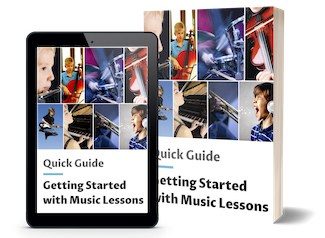When I started exploring speakers, I found myself puzzled by the difference between monitor speakers and bookshelf ones. The main difference lies in their purpose: monitor speakers deliver precise, uncolored sound for professional use, while bookshelf speakers are tailored for casual listening with richer, more dynamic audio.
Monitor speakers are all about accuracy—they won’t sweeten the sound, which is exactly what you need when mixing audio or producing music. Meanwhile, bookshelf speakers bring warmth and character, making them perfect for an immersive home theater experience or enjoying your favorite playlist.
Choosing between them really depends on your needs. If you love working with music or crave crystal-clear precision, studio monitors may be your match. But if you’re after room-filling sound for movies or lounging to tunes, bookshelf speakers win the day.
What Are Monitor Speakers and Bookshelf Speakers?

Bookshelf speakers and studio monitors are designed for different purposes, but they often look similar at first glance. While one focuses on pure audio accuracy, the other specializes in creating immersive sound for entertainment spaces.
Overview of Bookshelf Speakers
Bookshelf speakers are compact, versatile, and great for small to medium-sized rooms. Their primary purpose is to deliver rich, full-bodied sound that complements movies, music, or gaming setups.
These speakers produce smooth sound with added bass and midrange frequencies. They’re ideal for creating a surround sound experience when paired with amplifiers or subwoofers. Plus, they often have visually appealing designs, adding a retro touch to your space.
Normally passive, bookshelf speakers need an external amplifier to function. This lets you tweak settings like treble, bass, and volume. Placement matters too! For the best sound, these belong on elevated surfaces angled toward your ears—think bookshelves or stands.
Bookshelf speakers won’t give raw, accurate sound like studio monitors, but they’re perfect for creating cozy soundscapes. I love how they amplify action-packed movie nights or make relaxing tunes sound lush and warm.
AVCOM Active Bookshelf Speaker Pair, White
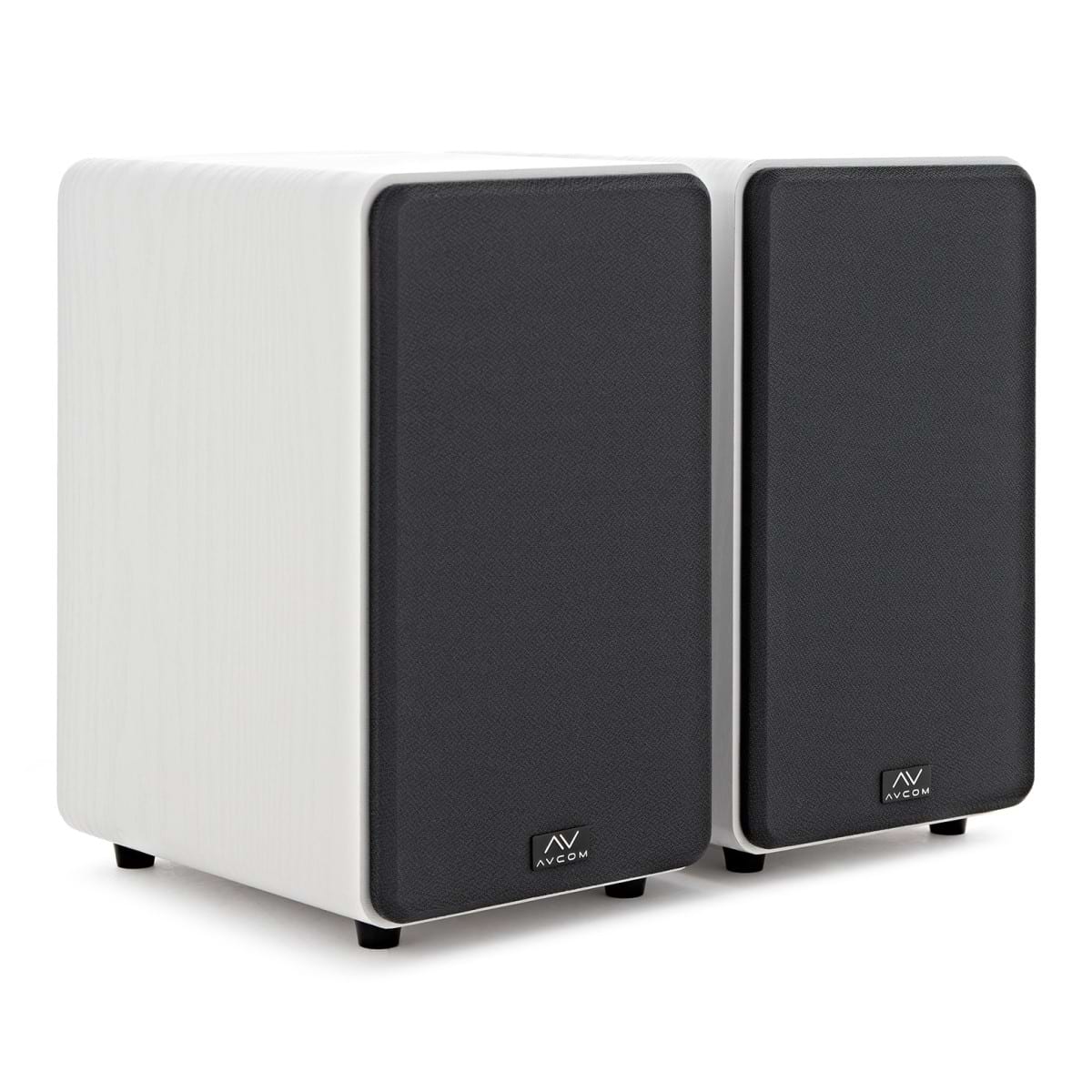
FEATURES: Built-in amplifier delivers rich, balanced audio without needing extra equipment
OTHER INFO: Sleek white design complements modern interiors while offering multiple input options for versatile connectivity
- Excellent sound clarity and deep bass for its size
- Plug-and-play setup with built-in amplification
- Elegant design fits seamlessly into any room décor
- Limited volume range for large rooms or parties
When you click ‘Check Price’, you’ll see there are loads of great places to buy this item. Our personal favorite is Sweetwater for the US, and Thomann and Gear4Music for the UK & Europe.
They are the largest music retailers, with excellent customer service, competitive prices, really fast shipping, and the longest guarantees.
The professional musician who wrote this article combined many things,
from the product build, manufacturer’s reputation through to feedback
from other users, to create our famous TedScore™.
Understanding Studio Monitors
Studio monitors are all about precision. They’re designed to reproduce sound as-is, without enhancing or altering frequencies. This makes them essential for music producers, sound engineers, and anyone who needs uncolored sound for recording or editing.
Unlike bookshelf speakers, studio monitors often include amplifiers built in, which makes setup simpler. They’re active systems—ready to plug and play—and don’t require matching external components like amps.
Studio monitors perform best in near-field listening, meaning they should stay close to you for optimal sound quality. They excel at highlighting subtle details in mixes, making them my go-to for editing audio tracks or refining song arrangements.
These speakers aren’t great for creating cinematic surround sound, but if accuracy is your priority, they’re unbeatable. When every little sound matters, studio monitors get the job done brilliantly.
Genelec 8010A Powered Studio Monitor
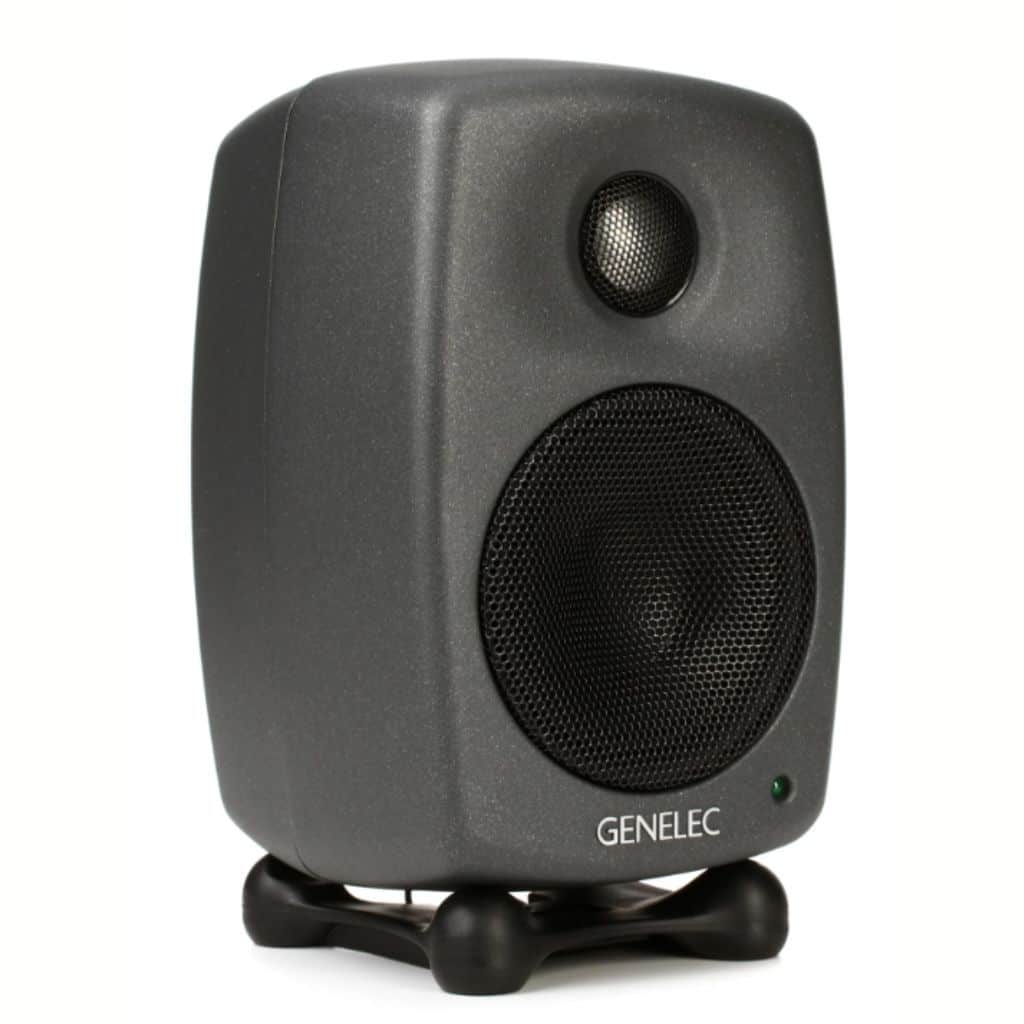
FEATURES: Excellent response and high SPL and Balanced XLR input
OTHER INFO: Bi-Amplified with efficient class D drivers
- Ideal for small studios and travel
- The price of the 8010A model may be higher than similar-sized monitors
When you click ‘Check Price’, you’ll see there are loads of great places to buy this item. Our personal favorite is Sweetwater for the US, and Thomann and Gear4Music for the UK & Europe.
They are the largest music retailers, with excellent customer service, competitive prices, really fast shipping, and the longest guarantees.
The professional musician who wrote this article combined many things,
from the product build, manufacturer’s reputation through to feedback
from other users, to create our famous TedScore™.
Core Differences Between Monitor Speakers and Bookshelf Speakers

When it comes to choosing between monitor speakers and bookshelf speakers, it all boils down to their design goals, how they handle sound, and how they connect to your system. Each serves a unique purpose, and knowing these differences helps pick the right fit for your needs.
Design Purposes
Monitor speakers, often called studio monitors, are built for work. They’re aimed at professionals and enthusiasts who need precise, detailed sound without adornments. These are tools, not toys, with simplicity in design and functional shapes meant to reduce interference.
Bookshelf speakers, on the other hand, cater to casual enjoyment. They’re made to look great in your home and often feature stylish designs. They prioritize aesthetics along with sound, blending into living spaces more seamlessly than the professional-grade monitor speakers.
Sound Reproduction
Here’s where the difference really shines. Monitor speakers prioritize accuracy and neutrality. They produce raw, unaltered sound, so you hear every detail, including flaws in recordings. This is why they’re a favorite for recording and mixing music.
Bookshelf speakers play with a bit more flair. Their sound profile is often “colored,” meaning bass and treble frequencies are enhanced for enjoyment. It’s not about hearing uncut sound—it’s about making music and movies sound lively and enveloping.
Connectivity and Amplification
Monitor speakers are essentially plug-and-play for most setups. They’re typically active speakers, meaning they come with a built-in amplifier. This saves you from buying an external amp, keeping things simple.
Bookshelf speakers are usually passive, so an external amplifier is mandatory. This gives you more control over your sound since you can pair them with the amp of your choice, but it also means more cables and components to manage.
Audio Components and Sound Quality

When it comes to speakers, the internal components and how they affect sound quality make all the difference. Let me walk you through how tweeters, woofers, bass, and subwoofers play crucial roles in shaping the listening experience.
Tweeter and Woofer Roles
Every speaker comes alive thanks to its tweeters and woofers. Tweeters handle the high frequencies—the sparkling cymbals, sharp vocals, and tiny details that add life to music. Without them, everything would sound flat and dull.
Woofers, on the other hand, are responsible for the lower and mid-range tones. They handle the richness in voices and the rhythmic thump of instruments like drums and bass guitars. Together, these two components create a balanced audio experience, with each one complementing the other in their specialized frequency ranges.
While studio monitors are usually designed to keep these components accurate and neutral, bookshelf speakers sometimes tweak the balance. This makes bookshelf speakers sound warmer or brighter, catering to casual listening rather than critical audio production.
Bass and Frequency Range
Bass is more than just thumps and booms—it’s the foundation that grounds music. The woofer of both bookshelf speakers and studio monitors plays a key role in managing bass tones. Typically, the larger the woofer, the deeper and more defined the bass.
Frequency range matters, too. Studio monitors are built to reproduce sounds as truthfully as possible, often extending to lower bass frequencies. Bookshelf speakers, however, might enhance certain tones to make music sound more appealing across various genres.
If you’re after that chest-thumping bass impact, remember that smaller speakers often can’t quite reach into the deeper frequency ranges without help. This is why understanding a speaker’s limitations becomes so important.
The Impact of Subwoofers
Sometimes woofers alone aren’t enough, especially if you demand deep, room-shaking bass. This is where subwoofers step in. They focus entirely on low-end frequencies, adding depth to explosions in movies or the rumble in bass-heavy tracks.
In studio monitors, subwoofers ensure no detail is missed in the lower range, which is critical for mixing music accurately. For bookshelf setups, adding a subwoofer can enrich the listening experience, filling in the frequencies they often struggle to reach.
It’s all about balance. With the right subwoofer, you can feel the music just as much as you hear it!
Speaker Placement and Room Considerations
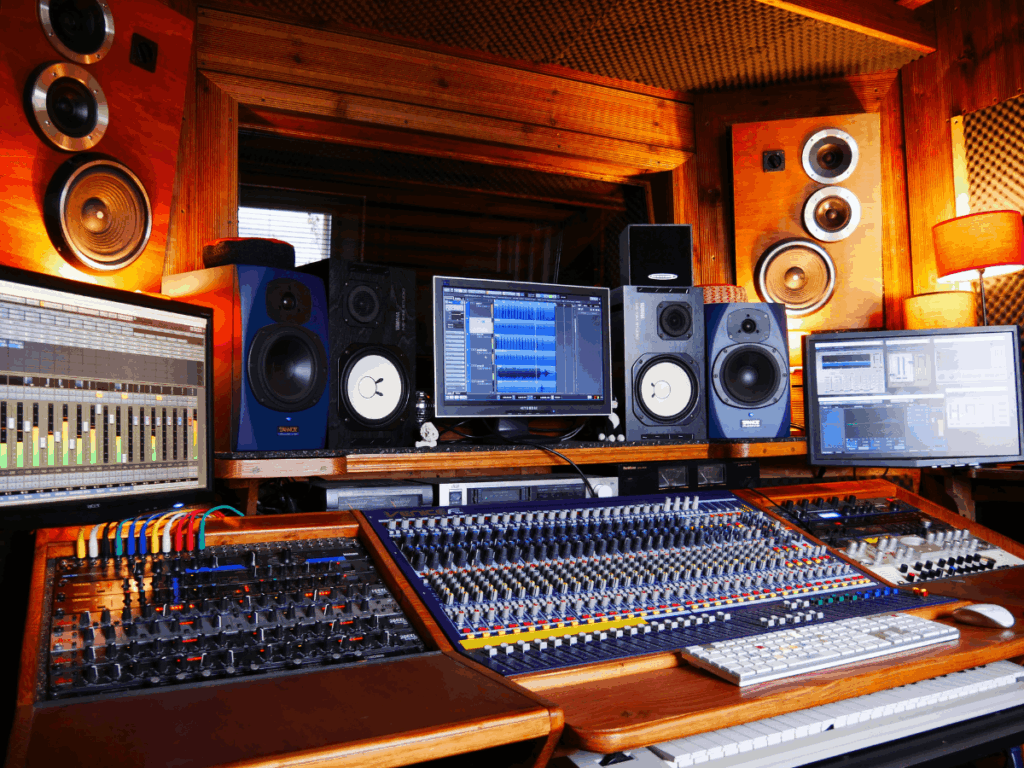
How you position your speakers and account for your room’s acoustics plays a huge role in sound quality. A poorly placed speaker can sabotage even a high-end system, while thoughtful placement can maximize clarity, balance, and bass response.
Nearfield Versus Room-Filling
When you’re setting up speakers, think about whether you want a focused, nearfield experience or a sound that fills the whole room. Monitor speakers, for instance, are designed for nearfield listening, meaning they thrive when placed close to you, like on a desk. This setup minimizes room reflections and gives you precise, surgical audio, perfect for editing music.
Bookshelf speakers, on the other hand, excel at room-filling sound. They’re ideal for casual listening or home theaters. However, their performance relies on careful spacing and distance from walls to avoid overly boomy bass or muffled audio.
Your room size also matters. In smaller spaces, nearfield setups may work best since they reduce interference caused by room reflections. Larger rooms with bookshelf speakers need extra consideration, like adding rugs or curtains to improve sound clarity.
Positioning Tips for Optimal Performance
Whether you’re using monitor or bookshelf speakers, placement height is key. Tweeters should be at ear level when you’re seated. For monitors, form an equilateral triangle between the two speakers and your listening position.
With bookshelf speakers, aim for at least 6–12 inches of space behind them to avoid bass buildup. If you’re using stands, they should be sturdy and possibly filled with sand or weights for stability.
Don’t place speakers directly against walls or on reflective surfaces like shelves. This can cause sound waves to bounce back unpredictably, muddying the audio. If necessary, use isolation pads to reduce vibrations and improve clarity.
Amplification and Power Needs
When it comes to bookshelf speakers and monitor speakers, the way they handle power differs a lot. Some are ready to go right out of the box, while others need an extra push from an amplifier or receiver. Let’s dive into what sets them apart and how to make the best choices for your setup.
Active vs Passive Speakers
One of the first things I look for when picking speakers is whether they’re active or passive. Active speakers have a built-in amplifier, so you don’t have to buy separate equipment. Just plug them in, connect your source, and they’re ready to play. That convenience is a big win, especially for studio monitors.
Passive speakers, on the other hand, rely on an external power source to operate. This means you’ll need an amplifier or receiver to drive them. Most bookshelf speakers fall into this category. While it’s an extra step, it usually provides more control over sound quality. Plus, you can upgrade components later, like swapping out your amp for a better one.
Choosing the Right Amp or Receiver
If you’re using passive bookshelf speakers, pairing them with the right amp or receiver is crucial. Amplifiers give the speakers the energy they need to produce sound. But it’s not just about power—it’s about compatibility. Wattage and impedance need to match for the best performance.
Receivers, which often combine amplification with input selection and sound processing, can simplify your setup. They’re great for home theaters or multi-use spaces. For music lovers, I usually recommend standalone amps for sharper sound quality. Always check your speaker specs and amp ratings carefully. The wrong pairing could lead to damaged equipment.
Choosing the Right Speaker for Your Needs
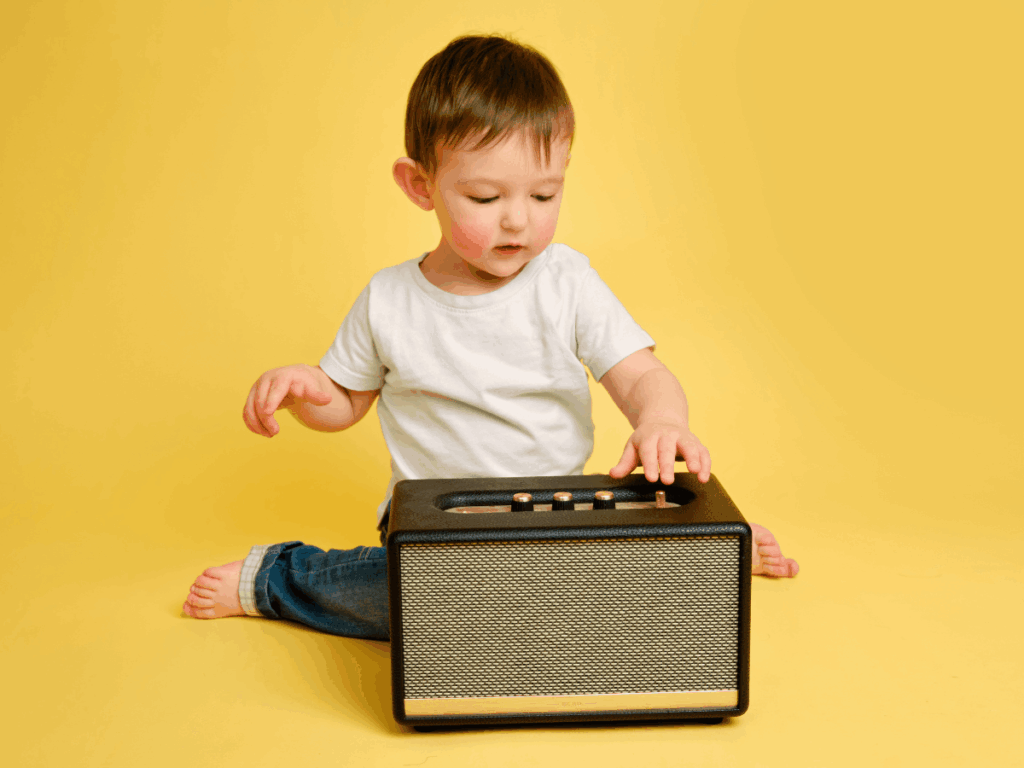
When deciding between bookshelf speakers and studio monitors, it’s all about what you value most: versatile home entertainment or pinpoint audio accuracy. Let’s explore which setup works best for different needs while considering future upgrades and system flexibility.
Music Production vs Home Entertainment
If you’re into music production, studio monitors are a no-brainer. These speakers are designed to deliver unaltered sound—no added bass, no boosted mids, just pure, raw audio. This clarity lets me hear every detail while mixing tracks or editing sound, ensuring I don’t miss anything vital.
Bookshelf speakers, however, shine for casual listening and home theater setups. They’re engineered to enhance your audio experience with warm tones and a surround sound feel. Whether I’m watching a movie or blasting music across the room, these speakers create an immersive environment that studio monitors just can’t replicate.
Placement also matters. Studio monitors are built for near-field listening, meaning they’re best positioned right in front of me. Bookshelf speakers, on the other hand, can fill a room when arranged thoughtfully—perfect for larger spaces!
Upgrade Potential and System Expansion
Bookshelf speakers usually need external amplifiers, which opens up opportunities for future upgrades. I love how easily I can swap out components, add subwoofers, or improve sound quality by upgrading my amp. This makes them super flexible for building a custom audio setup over time.
Studio monitors simplify things with built-in amps and plug-and-play connectivity. While this makes them easy to set up, it limits expandability. If one part of the speaker system breaks, I may have to replace the whole unit instead of just the damaged element.
For long-term tinkering and tailoring, bookshelf setups offer creative freedom. But if convenience trumps flexibility, studio monitors might be a better fit for me.
FAQ's
Studio monitors are built for precision and are designed to produce a flat, uncolored sound. They’re perfect for audio professionals who need an accurate representation of sound for mixing or mastering.
Bookshelf speakers, on the other hand, emphasize enjoyment and typically enhance certain frequencies to make the music sound more lively and fun. They’re ideal for casual listening at home.
Technically, yes, but they might not be the best choice. Most bookshelf speakers color the sound, adding bass or other enhancements that could mislead you during your mixing process.
For professional audio work, studio monitors are better because they aim to give you exactly what was recorded, flaws and all. Accuracy matters when fine-tuning sound.
Bookshelf speakers are compact and great for smaller spaces. They deliver excellent sound for their size but might lack the deep bass and room-filling power of floor-standing speakers.
Floor-standing speakers usually have larger drivers, producing richer, more dynamic sound. However, they take up more space and often come with a higher price tag.
Start with your purpose. If you’re mixing, go for studio monitors with a flat response. For casual listening, a good pair of bookshelf speakers with a sound profile you enjoy is a solid choice.
Check features, too. Studio monitors are often active (self-powered), while bookshelf speakers may require an external amplifier. Consider your setup needs and room size, too.
Some favorites among audiophiles include the KEF LS50 Meta, Bowers & Wilkins 606, and ELAC Debut B6.2. These are praised for their detail, clarity, and overall performance.
For budget models, the Klipsch R-51PM or Q Acoustics 3020i are fantastic picks. They deliver great sound without breaking the bank.
Absolutely. Monitor speakers are designed to be accurate and neutral. This flat response ensures you hear your mix as it truly is, which is crucial for professional work.
Many monitors also include features like balanced XLR or TRS inputs, which reduce noise. Built-in amplifiers also mean you don’t need external gear to power them, which is super convenient.




